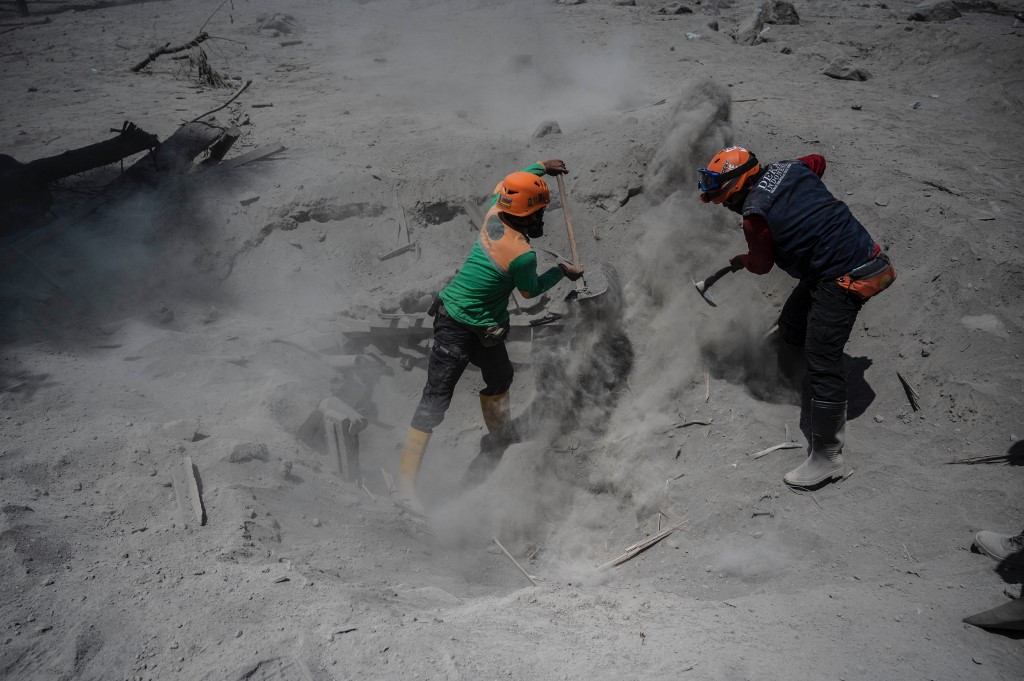Disastrous year-end
The National Disaster Mitigation Agency (BNPB) has identified East Java as the most vulnerable to floods, followed by West Java, Central Java, North Sumatra and Riau.
Change Size

A
s we remember those who perished in the Boxing Day tsunami that devastated Aceh and affected neighboring countries near and far 17 years ago, Southeast Asia once again is marking the year-end in grief.
Super Typhoon Rai, locally known as Odette, has claimed nearly 400 lives and displaced close to 1 million others in the Philippines, while the worst flood to have hit Malaysia since 2014 has killed almost 50 people.
Across Indonesia, many have been living under the threat of floods and landslides as rains increase in intensity. The National Disaster Mitigation Agency (BNPB) has identified East Java as the most vulnerable to floods, followed by West Java, Central Java, North Sumatra and Riau.
Hundreds of people are still sheltered in Lumajang regency in East Java following the volcanic eruption of Mount Semeru earlier this month and are likely to remain in displaced persons camps at the turning of the year. Government officials say a lava dome collapse resulting from a thunderstorm and persistent rain had triggered the eruption.
The rainy season normally spans from October to April and peaks in December and January or early February. For the second year in a row, however, the La Niña extreme weather phenomenon is visiting Indonesia and the region, which means places like Indonesia and Australia can get much more rain than usual.
The Meteorology, Climatology and Geophysics Agency (BMKG) has forewarned of a potential rise of rainfall level, hence floods and landslides, between December and February as the weather anomaly climaxes. Palembang has proved the forecast true – flooding that followed torrential rain hit the capital of South Sumatra on Christmas, affecting at least 17 areas.
As of Dec. 26, BNPB data had recorded 1,279 floods, or 42 percent of 3,034 cases of natural disasters that have struck the country this year.
It was extreme rainfall, too, that triggered big floods that swamped cities in Malaysia's Selangor state and forced tens of thousands of people to flee their homes. Local media reported many in the Shah Alam district were trapped in their homes and facing starvation until rescue officers evacuated them to safety.
True, heavy rain, especially if it lasts several days, will cause rivers and any drainage system to overflow, making floods unavoidable. But in many cases, weather cannot be scapegoated as thorough studies have found a correlation between extreme rainfall and climate change.
Rising temperature as a result of climate change has warmed the atmosphere, which consequently holds more water. In a nutshell, climate change increases the risk and intensity of flooding from extreme rainfall.
It remains to be seen if global warming has something to do with storms like Super Typhoon Rai, but the United Nations climate change agency has found it is “likely that the frequency of rapid intensification events have increased over the past four decades” as temperatures go up.
In its 2019 report, the UN Economic and Social Commission for Asia and the Pacific warned that Southeast Asia was exposed to various climate change-related hazards, including floods and tropical cyclones. If the year-end disasters were the impact of global warming, then failure to address it will spell more calamities in the years to come.









